Categories
Subjects
Authors
Artists
Venues
Locations
Calendar
Filter
Done
March 17, 2022 – Review
Leonor Antunes’s “the homemaker and her domain, part iii”
Jayne Wilkinson
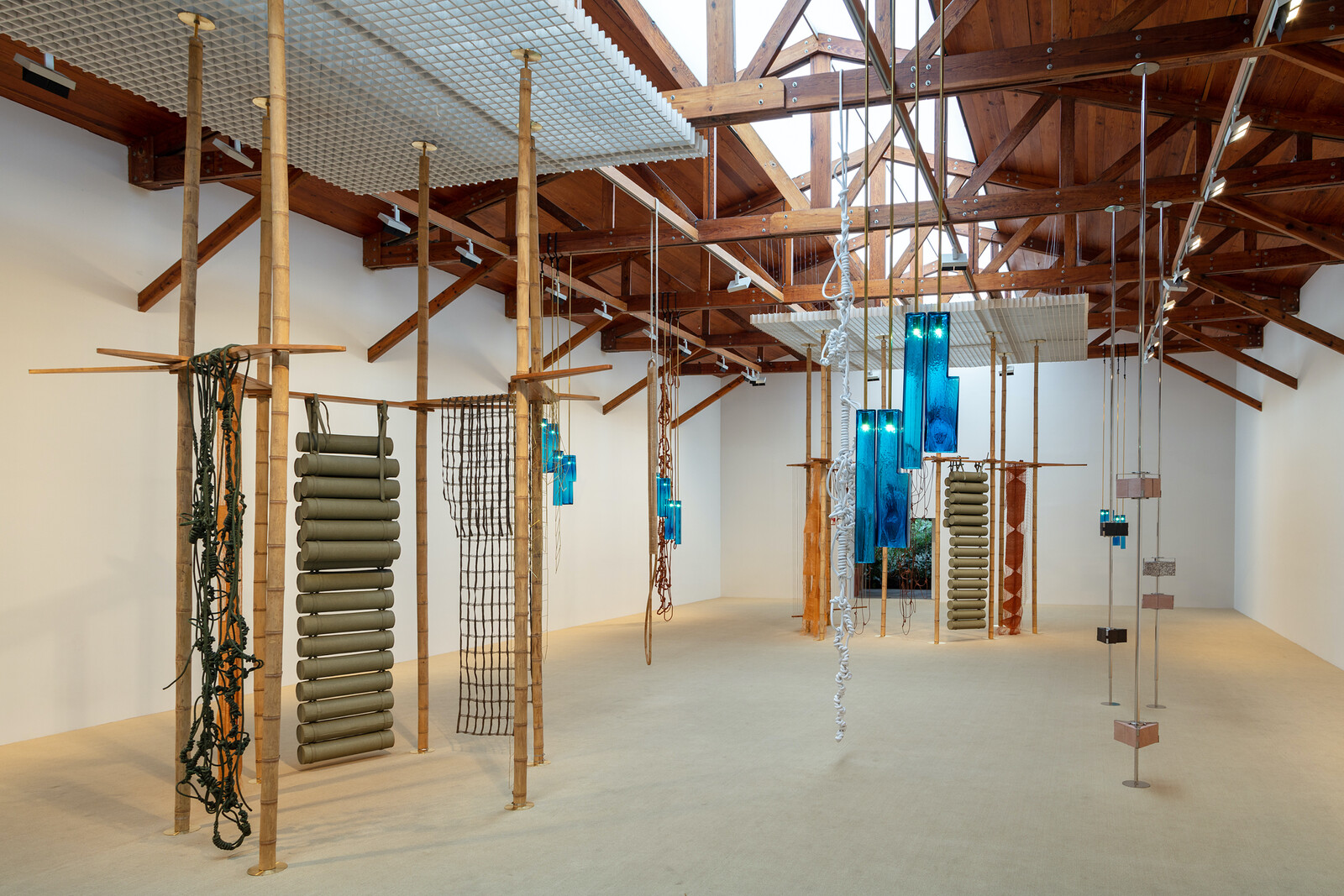
Leonor Antunes has described her latest exhibition as a library, or an archive. The vast range of materials—jute, bamboo, brass, nylon, pineapple leather, straw silk, cotton, glass—does offer a hanging collection of sorts, presented in various knots, weaves, textiles, and forms of joinery suspended around two primary structures. But any archival capacity is purely speculative, and the exhibition is more a staging of the conceptual possibilities of design than an accounting of historical documents. Nonetheless, histories saturate the work, and the invocation of many elegant lesser-known figures of twentieth-century art and design forms a network of influences tied together by Antunes’s own signature aesthetic.
As in her past work, Antunes addresses local contexts through visual and material citations that are direct, honorary, and respectful, in this case through the figure of Lena Meyer-Bergner, a designer who trained in the second phase of the Bauhaus and moved to Mexico in 1939. She was primarily a textile artist but was active in the graphic workshop, Taller de Gráfica Popular, which was famous for using printmaking to support anti-fascist and leftist political causes. The jute hanging grid that draws influence from Meyer-Bergner’s work tells us little that would recall her legacy directly, but it …
November 27, 2017 – Review
“Never Free to Rest”
Devon Van Houten Maldonado
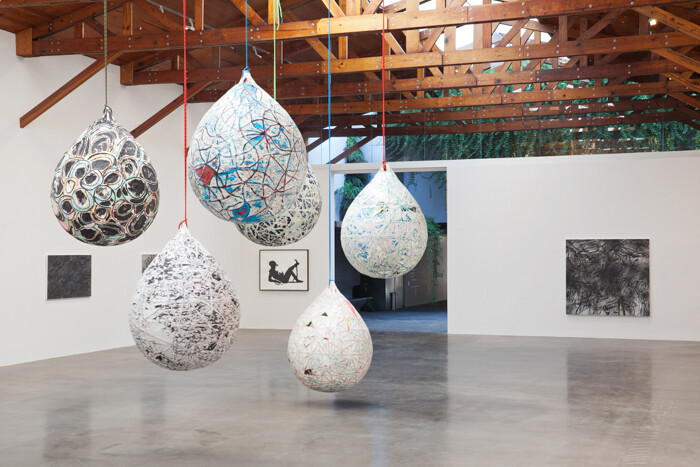
What does it mean to present a group show of black artists based in the United States and United Kingdom—Mark Bradford, Charles Gaines, Rodney McMillian, Julie Mehretu, Kara Walker, and Lynette Yiadom-Boakye—in Mexico City? Here, the white/black binary of racial discourse in the US and (to a lesser extent) Western Europe is complicated by the centrality of “mestizaje” (mixed ancestry) to the national identity. While this exhibition fails to fulfill its promise to “utilize the radical language of abstraction to destabilize black representation and systems of control,” it does offer the opportunity to reflect on some of the contrasts between postcolonial societies—whether real or imagined—in North and Latin America.
“In America, I was free only in battle, never free to rest—and he who finds no way to rest cannot long survive the battle,” reads the passage by James Baldwin that inspired the show’s title. But what this superficial collection of “hits” by popular black artists fails to consider is the context of both the country in which it is staged and the discourse that has shaped it: globalization and (post)colonialism as a double-edged sword. Globalization homogenizes and monetizes even as it makes possible new hybrid forms, like the jazz music Charles …
June 4, 2014 – Review
Apichatpong Weerasethakul’s “Fireworks”
Chris Sharp
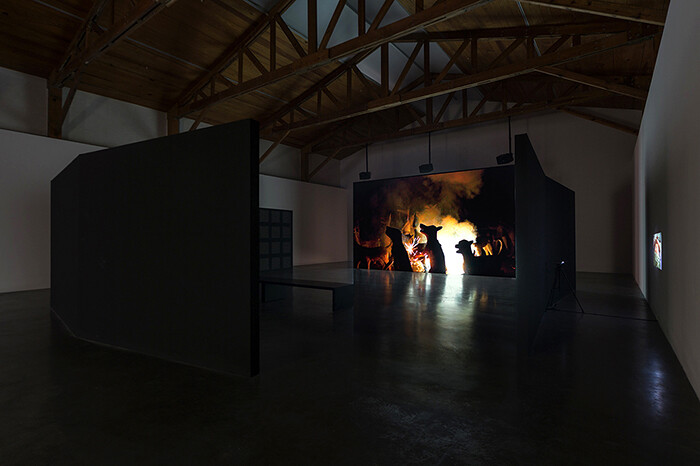
Having had the privilege of seeing the work of Apichatpong Weerasethakul in several different contexts (New York, Kassel, and even Bangkok), none have resonated with me so strongly and strangely as that of Mexico; how peculiarly apropos to see his new film in Mexico City. Shown among a furtive constellation of shorter and spatially slighter projections as well as a selection of lightbox photographs, Fireworks (Archives) (2014), the first part of a forthcoming trilogy of films, is clearly the main attraction of the Thai filmmaker and artist’s first solo outing at kurimanzutto.
This 6:40-minute film, which is projected on a large screen at the center of the darkened gallery’s main space, depicts Thai/Lao mystic, cult-leader, and sculptor Bunleua Sulilat’s (1932–1996) temple-cum-sculpture garden, Sala Keoku, located in northern Thailand close to the Mekong River. Passages of blackness sporadically dissolve under the fitful internal illumination of sparklers, which light up to reveal Sulilat’s unorthodox temple populated with a fantastical concrete menagerie of beasts and figures; the sculptures range from the broad, whale-like contours of a frog’s face, to a cavalcade of dogs on mopeds, to a pair of skeletons partially embracing as if sitting for a double portrait. These images are interspersed with …
January 29, 2013 – Review
Fernando Ortega
Chris Sharp
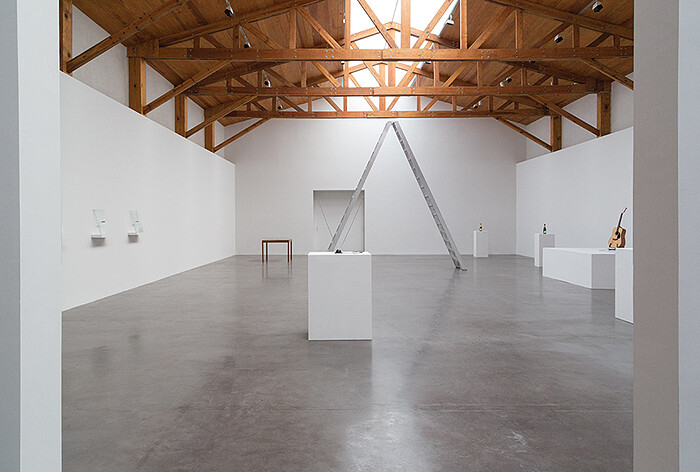
At the heart of this exhibition lurks a singularly misanthropic humanism. Never have I felt so simultaneously wanted and unwelcome, so integral and superfluous to a grouping of artworks. So delicate and poised are these pieces, and, in some cases, so potentially lethal, that the comparatively graceless human figure seems offensive here, a volume somehow too inexact to sustain such severe precision. And yet the nine works that comprise this show are not so defenseless as that. Despite their materially slight and patently conceptual character, they wield a presence that is categorically sculptural, if only by the sheer tension they potently generate.
Take, for instance, the four-part Harmonic Variations (2013). This supremely fragile installation continues the artist’s ongoing preoccupation with musical instruments—instruments, that is, which are more often than not, paralyzed by his interventions. It consists of four different variations of harmonicas wedged between sheets of glass, placed no less precariously on ledges, which are held in place by nothing more than gravity. Indeed the subtlety with which Richard Serra becomes a kind of etherealized spiritual father here speaks to how sculptural this work is. That triggersome (to coin a neologism) sensation carries on with more open humor in a series …
January 13, 2011 – Review
Allora & Calzadilla at Kurimanzutto, Mexico City
Adam Kleinman
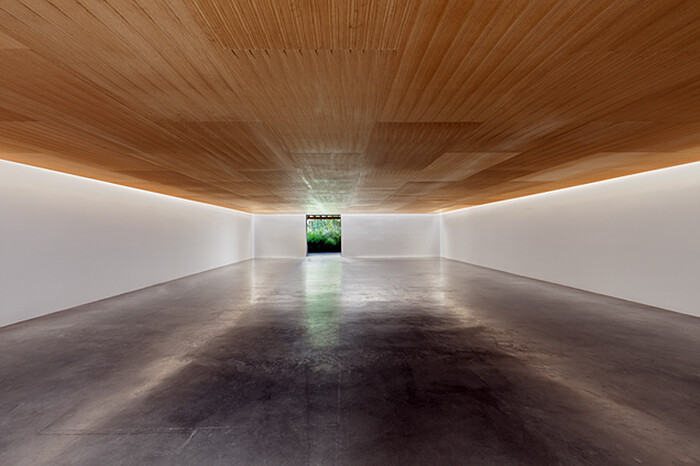
When viewing Compass, I had an uncanny feeling of being lost. Part of this had to do with the theatrical power of the work, yet a sense of dread came over me as I realized that this was actually a restaging. Although it is great to revisit a work, this new context leads to some measure of troubling questions. Namely, in this re-presentation, the artists had swapped out the video that was paired with the work the first time—and, in so doing, provided a problematic relation. This change makes a world of conceptual difference when considering the artists’ oeuvre and their practice, which is charted toward Venice to represent the USA for the next Biennale, but also makes an accidental commentary on the art industry as a whole.
When entering Compass, the viewer is presented with a vast empty space that has been bisected by a dropped ceiling, dividing the gallery into two levels—a narrow skylight allows light to filter from the top a la Louis Kahn and Tadao Ando. Other than the light, the lower level is entirely empty, save for a similar bleed in sound seeping in from above. What we’re hearing is the scuffling of dancers who take …